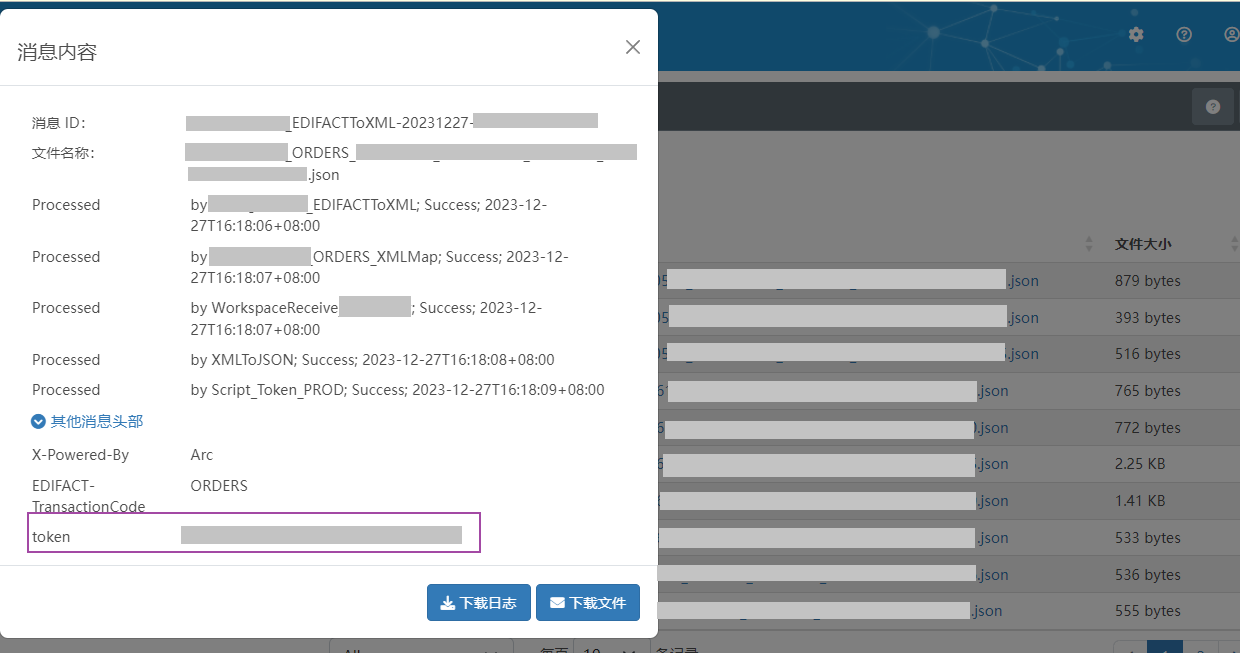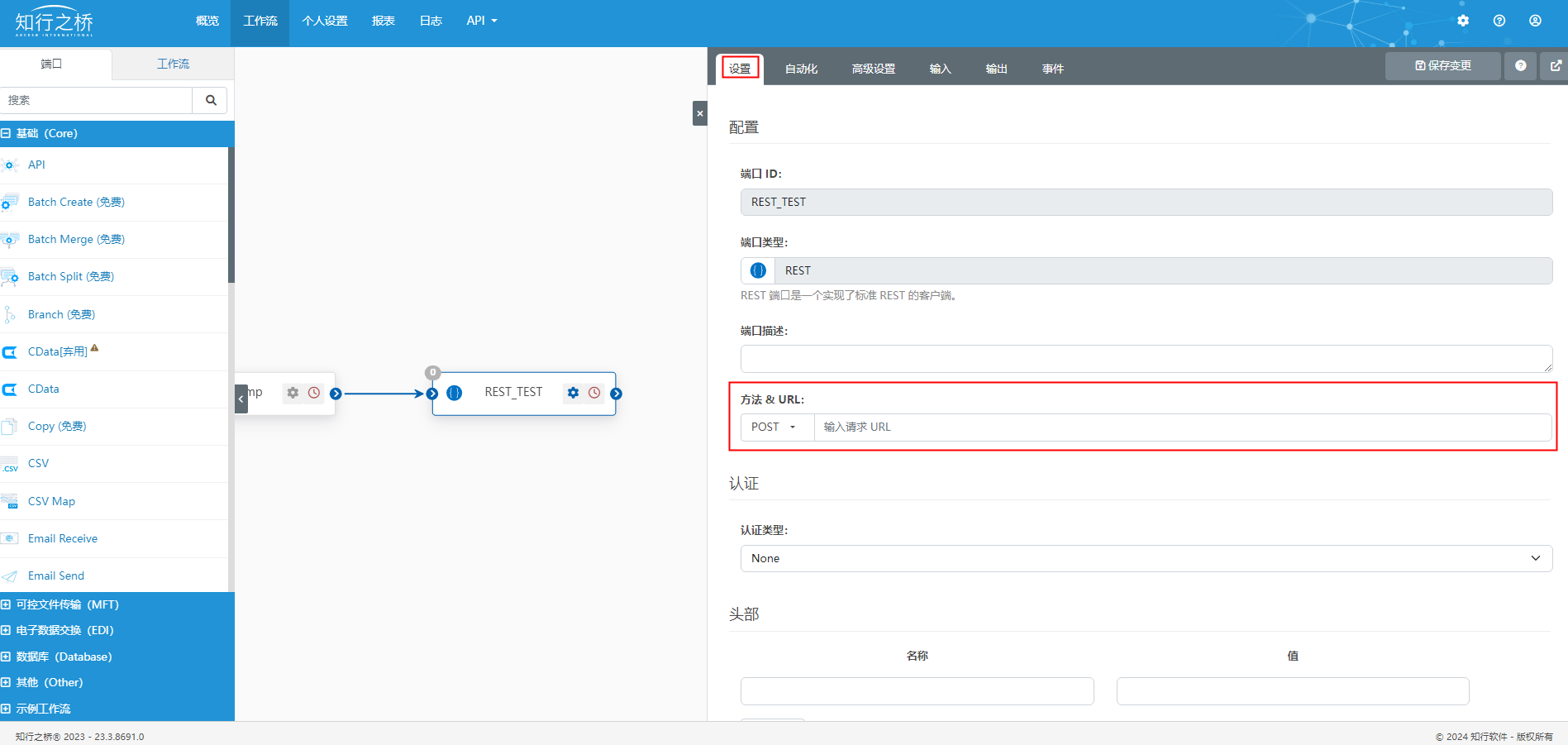如何获取用友ERP的动态Token?
在以往的EDI项目案例中,实现EDI系统与用友ERP系统的集成,用友ERP系统对外提供动态Token,EDI系统应该如何获取呢?
获取动态token
创建 Script端口,获取动态Token
1.添加脚本
知行之桥EDI系统是一个标准化的低代码平台,如果遇到现有功能端口无法实现需求的情况,可以在Script端口的设置选项卡下添加脚本文件。对于安全性要求较高的ERP系统,会在其接口文档中注明要求的加签方式,这部分将会通过编写脚本来实现。
如果要获取动态Token,则需要在设置选项卡下添加脚本:

<!-- NOTE: Do not edit arc:info -->
<arc:info title="Custom Script" desc="This script will be executed when a file is processed.">
<input name="ConnectorId" desc="The id of this connector." />
<input name="WorkspaceId" desc="The workspace of this connector." />
<input name="MessageId" desc="The message id." />
<input name="FilePath" desc="The path of the file being processed." />
<input name="FileName" desc="The name of the file being processed." />
<input name="Attachment#" desc="The path of the attachment being processed." />
<input name="Header:*" desc="The message headers of the file being processed." />
<output name="Data" desc="The data that will be written to the file in the Receive folder." />
<output name="Encoding" desc="The encoding that will be used to write the file in the Receive folder." />
<output name="FileName" desc="The name of the output file in Receive folder." />
<output name="FilePath" desc="The path of file that will be written to Receive folder." />
<output name="Header:*" desc="The message headers of the file being written." />
</arc:info>
<rsb:set attr="code.format" value="HMAC" />
<rsb:set attr="code.hmackey" value="用友提供的hmackey" />
<rsb:set attr="code.hmacalgorithm" value="用友要求的算法类型" />
<rsb:set attr="code.hmacbits" value="用友要求的信息" />
<rsb:set attr="code.outformat" value="用友要求的编码方式" />
<rsb:set attr="time.stamp" value="[_| now | todate('UNIXMILIS')]"/>
<rsb:set attr="code.data" value="用友提供的appKey"/>
<rsb:call op="encEncode" in="code" out="encode">
<rsb:set attr="sign.code" value="[encode.enc:encodeddata | urlencode()]" />
</rsb:call>
<!--调用ERP登录信息-->
<rsb:set attr="http.url" value="这里填写ERP提供的请求地址"/>
<rsb:call op="httpGet" in="http" out="out">
<rsb:set attr="login.response" value="[out.http:content]"/>
<!--检查登录结果-->
<rsb:set attr="login.successContent" value='"code":"00000"'/>
<rsb:check value="[login.response | contains([login.successContent])]">
<rsb:set attr="result.cookie" value="[login.response]"/>
<rsb:else>
<rsb:throw code="login.error" description="登陆ERP系统失败,请重试! 错误信息如下:[login.response]"/>
</rsb:else>
</rsb:check>
</rsb:call>
<rsb:set attr="In.file" value="D:\Token\Token.json"/>
<rsb:set attr="In.data" value="[login.response]"/>
<rsb:call op="fileCreate" in="In"/>具体的脚本编写需要结合ERP系统提供的接口文档进行定制化的开发,在这里编写的脚本将会获取动态Token并放在指定文件夹(D:\Token\Token.json)中。
2.根据用友ERP提供的接口文档设置获取时间
调用接口令牌是应用调用开放平台业务接口的凭证,有效期为两个小时,需要在知行之桥EDI系统中,设置为每两个小时获取一次。
进入Script端口的自动化选项卡下,勾选接收,表示端口将会按照设置的计划自动运行脚本。接下来将执行间隔设置为Minute,下方的 分 设置为120,表示每2小时自动执行一次脚本。
获得动态token之后,EDI系统即可调用具体的业务接口,从ERP系统中获取具体的业务数据。
EDI系统向ERP系统中推送数据
创建一个Script端口,获取Token
在新创建的Script端口的设置选项卡下,添加如下脚本:
<!-- NOTE: Do not edit arc:info -->
<arc:info title="Custom Script" desc="This script will be executed when a file is processed.">
<input name="ConnectorId" desc="The id of this connector." />
<input name="WorkspaceId" desc="The workspace of this connector." />
<input name="MessageId" desc="The message id." />
<input name="FilePath" desc="The path of the file being processed." />
<input name="FileName" desc="The name of the file being processed." />
<input name="Attachment#" desc="The path of the attachment being processed." />
<input name="Header:*" desc="The message headers of the file being processed." />
<output name="Data" desc="The data that will be written to the file in the Receive folder." />
<output name="Encoding" desc="The encoding that will be used to write the file in the Receive folder." />
<output name="FileName" desc="The name of the output file in Receive folder." />
<output name="FilePath" desc="The path of file that will be written to Receive folder." />
<output name="Header:*" desc="The message headers of the file being written." />
</arc:info>
<arc:set attr="In.file" value="D:\Token\Token.json"/>
<arc:call op="fileRead" in="In">
<arc:set attr="jsonIn.uri" value="[In.file]"/>
<arc:set attr="jsonIn.jsonpath" value="/json/data"/>
<arc:call op="jsonDOMSearch" in="jsonIn">
<arc:set attr="_message.header:token" value="[jsonpath('access_token')]"/>
</arc:call>
</arc:call>
<arc:set attr="out.filepath" value="[FilePath]"/>
<arc:push item="out"/>上述代码实现的主要功能是,获取之前存放在指定路径下的token,并将其写入文件的Header中。用户可以在此Script端口的输出选项卡下,查看消息的处理结果,点击文件即可预览消息内容,token将会被存放在其他消息头部中,效果如下所示:

创建一个REST端口,推送订单数据
在REST端口的设置选项卡下,设置方法&URL。

方法设置为 POST,URL设置为ERP接口文档中提供的订单请求地址。
接下来在高级设置选项卡下的高级设置中,勾选允许在 URL 中使用 ArcScript。

以上便是获取动态token的全部内容了,由于不同ERP系统的具体需求可能会有差异,因此用户在参考上述内容时,如果遇到任何问题欢迎交流。
扩展阅读:EDI是什么?
本文来自互联网用户投稿,该文观点仅代表作者本人,不代表本站立场。本站仅提供信息存储空间服务,不拥有所有权,不承担相关法律责任。 如若内容造成侵权/违法违规/事实不符,请联系我的编程经验分享网邮箱:chenni525@qq.com进行投诉反馈,一经查实,立即删除!
- Python教程
- 深入理解 MySQL 中的 HAVING 关键字和聚合函数
- Qt之QChar编码(1)
- MyBatis入门基础篇
- 用Python脚本实现FFmpeg批量转换
- AutoSAR(基础入门篇)2.1Autosar架构中的AppL
- 环形链表、约瑟夫问题+Java栈
- 手机崩溃日志的查找与分析
- vue3 - Element Plus 切换主题色及el-button hover颜色不生效的解决方法
- 米软客户单病种上报量云南省第一
- C++ STL库详解:list
- 2024啦,致敬最可爱的技术人!!
- CodeWave智能开发平台--03--目标:应用创建--09供应商详情页面下
- axios的post请求,数据为什么要用qs处理?什么时候不用?
- Python急速入门——(第五章:列表)